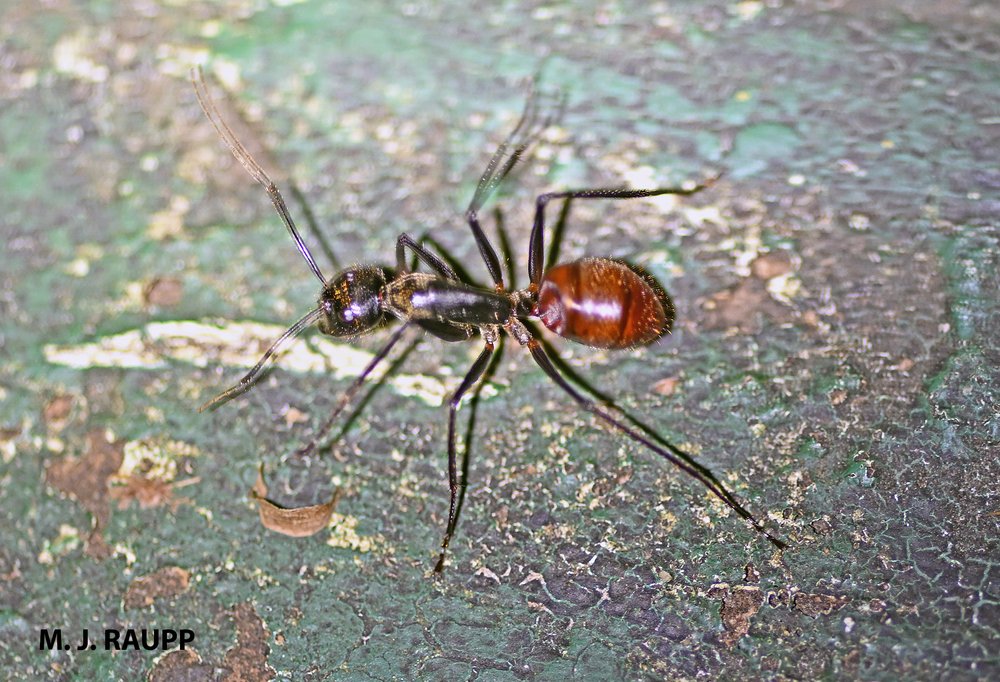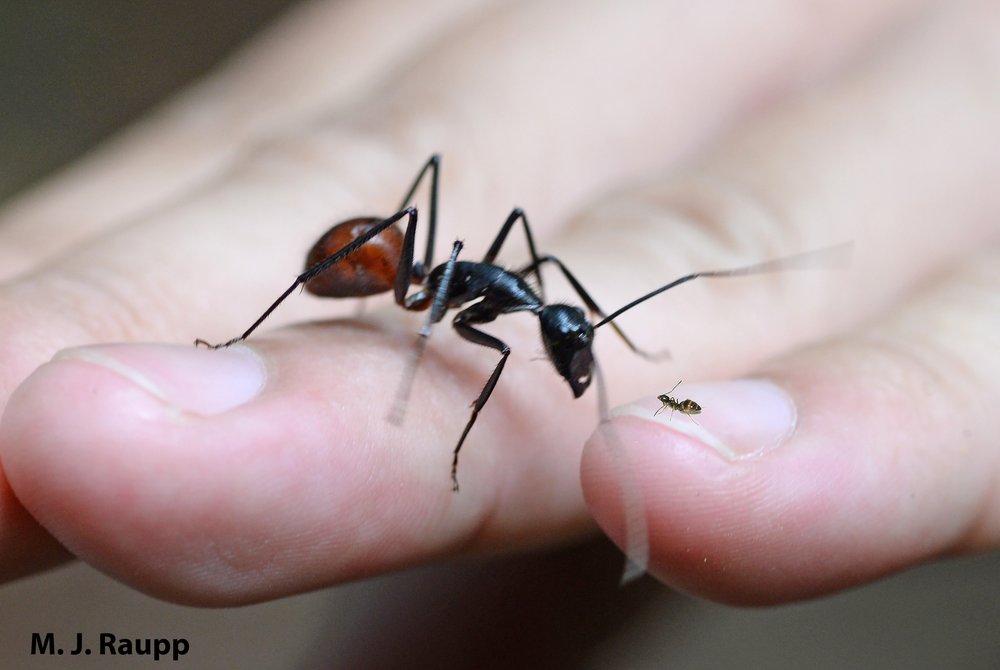
Night time is the right time to observe and enjoy Malaysian giant forest ants in Borneo.
This week we say goodbye to periodical cicadas and return to the rainforests of Borneo where we last visited rapacious Leptogenys ants, rainforest raiders, as they pillaged other small animals on the rainforest floor. This week we venture into the forest to meet one of the largest species of ants on the planet, the Malaysian giant rainforest ant.
To witness these giants of the ant world, a flashlight and willingness to venture into the forest at night provide your best bet for encountering these behemoths of the ant world. Unlike some species of ants that can readily be found during the daytime, giant ants conduct most of their food gathering at night. Scientists have discovered that shortly after dusk scores to thousands of foragers leave one or more subterranean nests that comprise a colony, move across the forest floor, and invade the forest canopy. High in the treetops, honeydew produced by sucking insects including planthoppers, treehoppers, and lanternflies constitutes about 90% of what foragers collect to bring back to the nests. The remaining sources of food gathered by workers include small insects and nutrient rich bird droppings. Why forage at night rather than during the day? Night time foraging in the forest canopy may have to do with avoidance of predators and parasitoids. Birds and wasps that rely on sight to find prey may be more active and efficient in trees during daylight hours. Also, several other species of ants living in the same habitats are highly active and dominate foraging trails and resources during daylight hours. High levels of interspecific ant traffic and food raids in the canopy may displace giant tree ants and limit their activities to the night.
Amidst the music of the rain forest at night, Malaysian giant forest ants leave their subterranean nests to forage for honeydew and insects. Their journeys take them across the forest floor, along human-made sidewalks, and eventually to treetops to gather carbohydrate rich honeydew from sucking insects and to hunt small insects. These gentle giants seemed completely unfazed at being admired by a nosy bug geek.

A giant forest ant from Borneo ogles its puny North American cousin, the odorous house ant. Size differences are accurate and, yes, this image is photo-shopped.
Just how large these giant ants? Well, the regular workers like ones seen in this episode are about 21 mm (0.82 inches) in length while the soldiers which, sadly, we did not see, are larger at 28 mm (1.1 inches). Contrast this massive size with the size of the odorous house ant workers, an ant common here in North America, which run about 3.3 mm (0.1 inches) in length. One can only imagine what a stir giant ants would cause if folks found these wandering around the kitchen in the morning here in the US. Wouldn’t that be amazing?
Acknowledgements
The fascinating articles “Contributions to the life history of the Malaysian giant ant Camponotus gigas (Hymenoptera, Formicidae) by M. Pfeiffer and K.E. Linsenmair and “A briefing on the life history of the giant forest ant Camponotus gigas (pdf) by Martin Pfeiffer were consulted for this episode. We thank Oliver at Tabin Wildlife Reserve and Larry at Mulu National Park for guiding nocturnal rainforest adventures. The keen eyes of Dan, Kristie, Bob, Pat, and Paula helped spot insects for this episode.
No comments:
Post a Comment